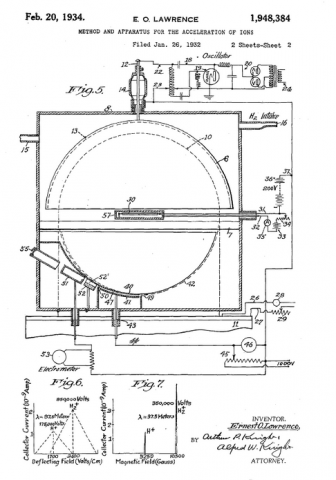Ernest Lawrence patents the cyclotron

In 1929 Ernest Lawrence – then associate professor of physics at the University of California, Berkeley, in the US – invented the cyclotron, a device for accelerating nuclear particles to high velocities without the use of high voltages. Lawrence was granted US patent 1948384 for the cyclotron on 20 February 1934. The machine was used in the following years to bombard atoms of various elements with swiftly moving particles. Such high-energy particles could disintegrate atoms, in some cases forming completely new elements. Hundreds of artificial radioactive elements were formed in this manner.
Eventually, the cyclotron was able to accelerate particles such as protons to the energy of a few tens of megaelectronvolts (symbol: MeV. One MeV equals one million electronvolts). Initially driven by the effort to discover the antiproton, the accelerator era had begun, and with it the science of high-energy physics was born.
In 1939 Lawrence won the Nobel prize in physics, "for the invention and development of the cyclotron and for results obtained with it, especially with regard to artificial radioactive elements".